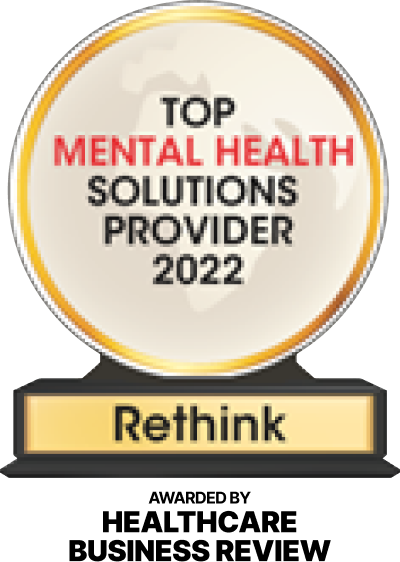If management asks around the office, most employees are likely to tell you they love their job. It’s up to you if you’re going to take their word for it.
Resilience in the office is something most employers overlook, but it’s one of the most important things to take into consideration when you notice an employee or team going through a hard time. As a leader, if you’re able to share resilience training techniques to help your team bounce back more quickly, they’ll be able to beat out the competition in no time.
So, why are you overlooking resilience in your office? Are you being mindful of how your employees are feeling? How are you training for mindfulness and resilience and how will this training impact your work environment? These are the questions you should have answers to if you start to notice employee wellbeing slipping.
Being Mindful and Resilient in the Office
Resilience is the ability to recover quickly from failure, and learn and grow from the adversity you faced. When thinking about resilient personalities, you may think of people who are unfazed by stress. But, resilience doesn’t mean the absence of stress and failure, it means you are mindful of them and able to maneuver through those situations.
According to the American Institute of Stress, one million employees miss work each day because of on the job stress. Creating a more resilient workplace and ways for employees to overcome stress can help decrease the impact of this alarming statistic in your workplace.
To be resilient, employees have to first go through some sort of stress or adversity and be aware of the steps to overcome their problems. If your employees aren’t able to see how a difficult situation is going to go, power through the situation and come out the other side with more knowledge and work experience than before, you have some work to do. Less than half (40%) of employees have talked about the stress they’re experiencing with their employer.
Ensure employees are mindful and are able to talk about what’s happening around them so they’re able to grow, adapt and bounce back throughout their time at your company. Creating a culture with open dialogue where employees feel as if their job will not be jeopardized by voicing their concerns about stress is one way to do this.
Resilience can come naturally to a lot of people, but those who aren’t as lucky may struggle to come back from a disappointing meeting or stressful situation. Resilience is a learned trait that can be taught, adapted and utilized by anyone if they have the right digital tools for modern professionals.
Training Employees for Resilience
Training employees for resilience can’t happen until you’re trained for resilience yourself. According to the Mayo Clinic, the most important exercise in improving resilience is training your attention and awareness. Mindfulness practice helps you to be intentional about what you’re doing throughout the day.
Likewise, employees have to be purposeful in their thoughts about work in order to keep negativity out of the workplace. Once you’re able to be resilient in your everyday life, you can pass the traits onto your employees.
The American Psychological Association encourages working on your resilience in a couple of different ways:
- Understand you are in control of your life
- Believe you have value and worth in your position
- Tell yourself you can do what you set your mind to
- Understand and manage your own emotions before trying to understand employees
Once you have mastered these areas, you can start leading employees to a resilient mindset. Encourage traits most people see as resilient by communicating powerfully (not demeaningly), encouraging bold risks, switch things up and delegating responsibility.
Encourage your employees to do take on these steps in their everyday actions:
- Be accountable for their work. Accountability is a great way to encourage actions and results before a project gets behind.
- Set goals. Not only goals but steps to achieving your goals. Having goals and setting steps to achieve them allows for a clear path from point A to point B that can be easily found again when something goes wrong. People who set goals are 14% more likely to be successful at what they’re doing.
- Tackle challenges head-on. Let your employees know they have a voice and should be comfortable suggesting solutions to a problem. 76% of employees look for new positions because they don’t feel valued at work.
- Individual definitions of excellence. Support your employee’s individual definitions of excellence with your own definition so they can align their ideas with yours.
Encouraging resilience and being mindful of how your employees are transforming your workplace will allow them to grow into the traits that are thought to be some of the most important in the workplace.
Mindfulness and Resilience Impact
Mindfulness in the workplace is contagious. Once a couple of key employees start being resilient and positive through change, other employees will start catching on and likely meet these new standards. Once the ball is rolling it’s hard to slow it down. Soon your employees will be showing the traits so many leaders look for in great workers.
- The ability to have high-quality connections
- Being able to manage stress successfully
- Presenting an authentic self
- Having grit
- Finding inspiration and holding inspiration throughout their work
- Mental flexibility and toughness
- Managing change and setbacks
These traits are what make a good workplace a great one and it will show in the work your employees produce and their mindset while they do it. Employees who adopt resilience into their everyday lives and practice it at work will be some of the highest performing workers, won’t be afraid to share their big ideas and will act as a source of positivity to others in the office.
To learn more about how resilience and mindfulness will have a huge impact on your office and employees, join us for our webcast titled “Mindfulness to Help Employees Build Stress Resilience!”











